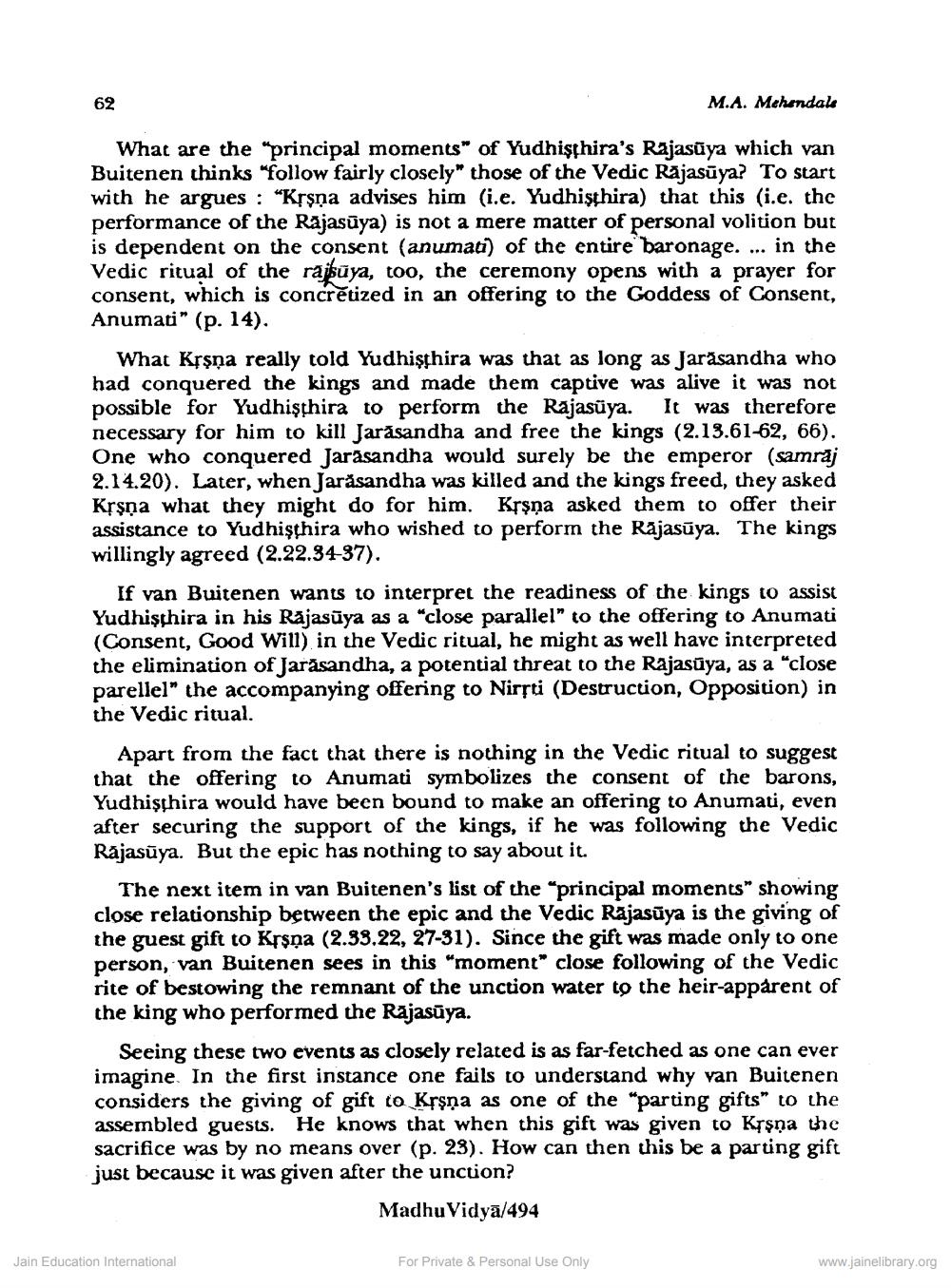________________
62
M.A. Mehandala
What are the principal moments of Yudhisthira's Rajasūya which van Buitenen thinks "follow fairly closely" those of the Vedic Rajasūya? To start with he argues : "Krşņa advises him (i.e. Yudhisthira) that this (i.e. the performance of the Rajasūya) is not a mere matter of personal volition but is dependent on the consent (anumat) of the entire baronage. ... in the Vedic ritual of the rajßūya, too, the ceremony opens with a prayer for consent, which is concretized in an offering to the Goddess of Consent, Anumati" (p. 14).
What Krşņa really told Yudhişthira was that as long as Jarasandha who had conquered the kings and made them captive was alive it was not possible for Yudhişthira to perform the Rajasüya. It was therefore necessary for him to kill Jarasandha and free the kings (2.13.61-62, 66). One who conquered Jarasandha would surely be the emperor (samraj 2.14.20). Later, when Jarasandha was killed and the kings freed, they asked Krşna what they might do for him. Krşņa asked them to offer their assistance to Yudhisthira who wished to perform the Rajasūya. The kings willingly agreed (2.22.94-37).
If van Buitenen wants to interpret the readiness of the kings to assist Yudhisthira in his Rajasūya as a "close parallel to the offering to Anumati (Consent, Good Will) in the Vedic ritual, he might as well have interpreted the elimination of Jarasandha, a potential threat to the Rajasūya, as a "close parellel" the accompanying offering to Nirsti (Destruction, Opposition) in the Vedic ritual.
Apart from the fact that there is nothing in the Vedic ritual to suggest that the offering to Anumati symbolizes the consent of the barons, Yudhisthira would have been bound to make an offering to Anumati, even after securing the support of the kings, if he was following the Vedic Rajasūya. But the epic has nothing to say about it.
The next item in van Buitenen's list of the principal moments” showing close relationship between the epic and the Vedic Rajasūya is the giving of the guest gift to Krsna (2.93.22, 27-31). Since the gift was made only to one person, van Buitenen sees in this "moment" close following of the Vedic rite of bestowing the remnant of the unction water to the heir-apparent of the king who performed the Rajasūya.
Seeing these two events as closely related is as far-fetched as one can ever imagine. In the first instance one fails to understand why van Buitenen considers the giving of gift to Krşņa as one of the "parting gifts" to the assembled guests. He knows that when this gift was given to Křşņa the sacrifice was by no means over (p. 23). How can then this be a parting gift just because it was given after the unction?
Madhu Vidyā/494
Jain Education International
For Private & Personal Use Only
www.jainelibrary.org




